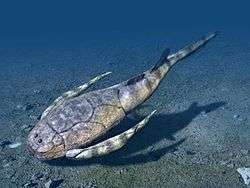Dukecynus
Dukecynus is an extinct genus of meat-eating metatherian belonging to the order Sparassodonta, which lived in South America during the Middle Miocene (Laventan), between about 13.8 and 11.8 million years ago.[1] The name of the genus meaning "Duke dog", for Duke University and the Greek word cynos, dog, for the pretended similarity of this animal with dogs. A single species known so far, Dukecynus magnus. The species name "magnus" derives from Latin for big, to reflect their great size.
| Dukecynus | |
|---|---|
 | |
| Fossil illustration | |
| Scientific classification | |
| Kingdom: | |
| Phylum: | |
| Class: | |
| Order: | |
| Superfamily: | Borhyaenoidea |
| Genus: | Dukecynus Goin, 1997 |
| species | |
| |
Description
Dukecynus is only known from its holotype, IGM 251149, a heavily damaged partial skull preserving parts of the lower and upper jaw as well as associated fragments of the skeleton.[1] This specimen was discovered at the Konzentrat-Lagerstätte La Venta in the Honda Group, Huila and Tolima in Colombia. A second fragmentary specimen from La Venta, cataloged as UCMP 39250, consisting of a fragmentary skull and parts of the humerus and femur from a juvenile individual, referred to "cf. Arctodictis" by Marshall (1978) could also belong to Dukecynus or a similar species.[2][1] Although the affinities of this species have never been formally analysed, Dukecynus is generally considered to be a basal borhyaenoid, a paraphyletic group of sparassodonts that includes genera like Lycopsis and Prothylacynus that cannot be assigned to one of the major borhyaenoid families like Borhyaenidae or Thylacosmilidae.[3] Compared to other basal borhyaenoids, Dukecynus had a long, narrow snout and was relatively large, with some estimates suggesting this animal weighed up to 68 kilograms (150 lbs).[4] Dukecynus was probably the largest mammalian predator as well as the largest sparassodont at La Venta.
References
- Goin, F. J. 1997 New clues for understanding Neogene marsupial radiations. In A history of the neotropical fauna. Vertebrate paleobiology of the Miocene in Colombia (ed. R. F. Kay, R. H. Maden, R. L. Cifelli & J. Flynn), pp. 185–204. Washington DC: Smithsonian Institution Press.
- Marshall, L. Evolution of the Borhyaenidae, extinct South American predaceous marsupials. Berkeley: University of California Press, 1978.
- Forasiepi, Analía M. (2009). "Osteology of Arctodictis sinclairi (Mammalia, Metatheria, Sparassodonta) and phylogeny of Cenozoic metatherian carnivores from South America". Monografías del Museo Argentino de Ciencias Naturales. 6: 1–174.
- Stephen Wroe, Christine Argot and Christopher Dickman. On the rarity of big fierce carnivores and primacy of isolation and area: tracking large mammalian carnivore diversity on two isolated continents. Proc. R. Soc. Lond. B (2004) 271, 1203–1211 1203, doi 10.1098/rspb.2004.2694
External links
- Marsupial `dogs', `bears', `sabre-tooths' and `weasels' of island South America: meet the borhyaenoids, by Darren Naish
- Бестиарий - Доисторические животные - Prehistoric Fauna (naturalistic reconstruction by Roman Uchytel)
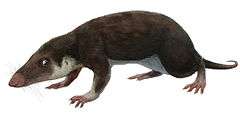

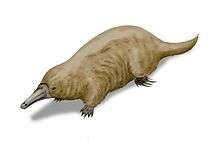
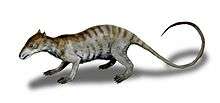
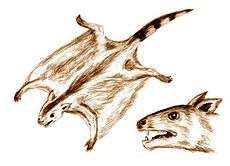
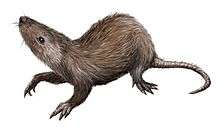






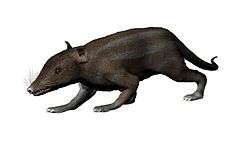


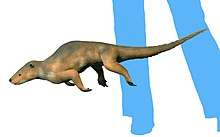
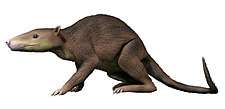
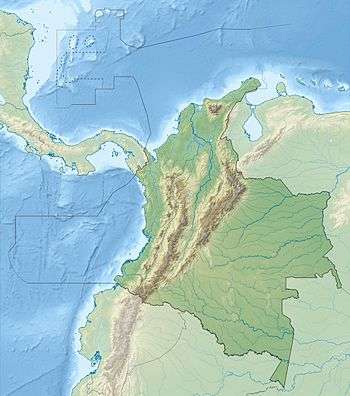
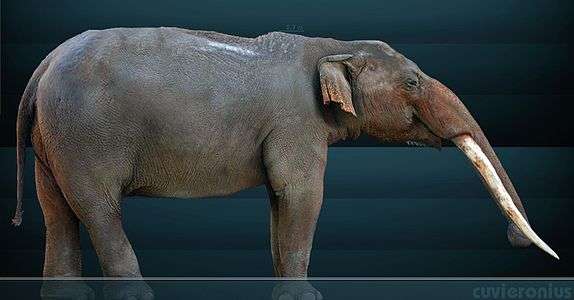
.jpg)
